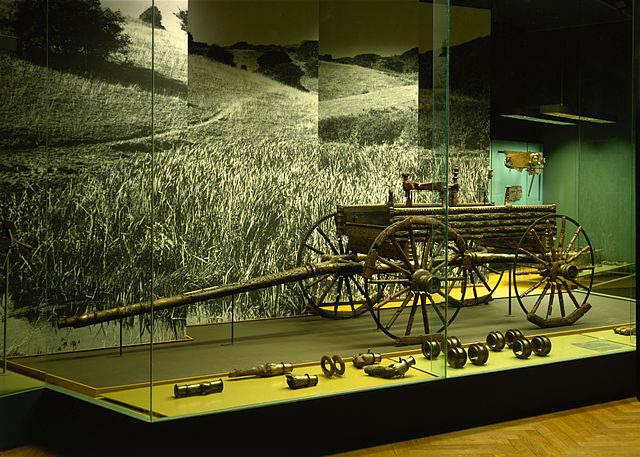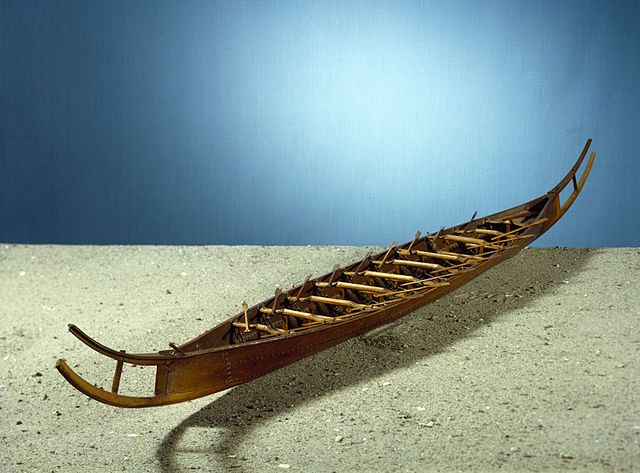The Hjortspring boat is a vessel designed as a large canoe, from the Scandinavian Pre-Roman Iron Age. It was built circa 400–300 BC. The hull and remains were rediscovered and excavated in 1921–1922 from the bog of Hjortspring Mose on the island of Als in Sønderjylland, southern Denmark. The boat is the oldest find of a wooden plank ship in Scandinavia and it closely resembles the thousands of petroglyph images of Nordic Bronze Age ships found throughout Scandinavia. The vessel is a clinker-built wooden boat of more than 19 metres length overall, 13.6 metres long inside, and 2 metres wide. Ten thwarts that could have served as seats, span the boat with room for two persons each; this suggests space for a crew of at least 20 who propelled the boat with paddles. The boat would have weighed an estimated 530 kilograms, making it easily portable by its crew.
The reconstructed remains of the Hjortspring boat at the National Museum of Denmark in Copenhagen
Model
Rock carvings of boats.
Reconstruction of the Hjortspring boat.
Archaeology of Northern Europe
The archaeology of Northern Europe studies the prehistory of Scandinavia and the adjacent North European Plain,
roughly corresponding to the territories of modern Sweden, Norway, Denmark, northern Germany, Poland and the Netherlands.
The Trundholm Sun Chariot, Denmark, c. 1400 BC
Sword from Lindholmgård, Denmark
The Dejbjerg wagon, 1st century BC, in the National Museum of Denmark
Hjortspring boat, Denmark, c. 400 BC








